The Best Years of Our Lives
9.4 /10 1 Votes9.4
98% Rotten Tomatoes 4.7/5 Amazon Genre Drama, Romance, War Duration Language English | 8.2/10 IMDb 4/4 Roger Ebert Country United States | |||||||||||||||||||||||||||||||||
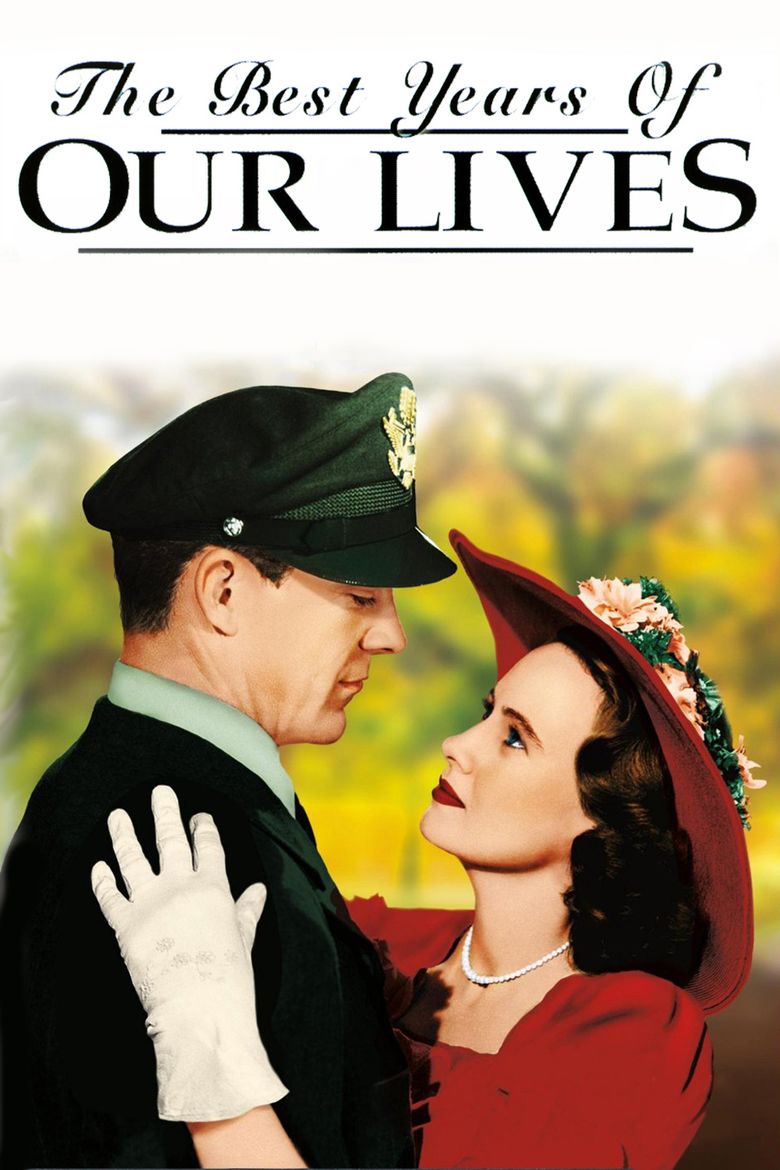 | ||||||||||||||||||||||||||||||||||
Release date November 21, 1946 (1946-11-21) (United States) Screenplay Robert E. Sherwood, MacKinlay Kantor Cast (Al Stephenson), (Milly Stephenson), (Fred Derry), (Peggy Stephenson), (Marie Derry), Cathy O'Donnell (Wilma Cameron)Similar movies When Trumpets Fade , Hell Is for Heroes , Saving Private Ryan , Max Manus: Man of War , The Thin Red Line , The Story of G.I. Joe Tagline Three wonderful loves in the best picture of the year! | ||||||||||||||||||||||||||||||||||
The best years of our lives official trailer 1 dana andrews movie 1946 hd
The Best Years of Our Lives (aka Glory for Me and Home Again) is a 1946 American drama film directed by William Wyler and starring Myrna Loy, Fredric March, Dana Andrews, Teresa Wright, Virginia Mayo, and Harold Russell. The film is about three United States servicemen readjusting to civilian life after coming home from World War II. Samuel Goldwyn was inspired to produce a film about veterans after reading an August 7, 1944, article in Time about the difficulties experienced by men returning to civilian life. Goldwyn hired former war correspondent MacKinlay Kantor to write a screenplay. His work was first published as a novella, Glory for Me, which Kantor wrote in blank verse. Robert E. Sherwood then adapted the novella as a screenplay.
Contents
- The best years of our lives official trailer 1 dana andrews movie 1946 hd
- The best years of our lives 1946 final scene
- Plot
- Cast
- Production
- Critical response
- Popular response
- Awards and honors
- References

The Best Years of Our Lives won seven Academy Awards in 1946, including Best Picture, Best Director (William Wyler), Best Actor (Fredric March), Best Supporting Actor (Harold Russell), Best Film Editing (Daniel Mandell), Best Adapted Screenplay (Robert E. Sherwood), and Best Original Score (Hugo Friedhofer). In addition to its critical success, the film quickly became a great commercial success upon release. It became the highest-grossing film and most attended film in both the United States and UK since the release of Gone with the Wind, selling approximately 55 million tickets in the United States which equaled a gross of $23,650,000. It remains the sixth most-attended film of all time in the UK, with over 20 million tickets sold. The film had one of the highest viewing figures of all time, with ticket sales exceeding $20.4 million.
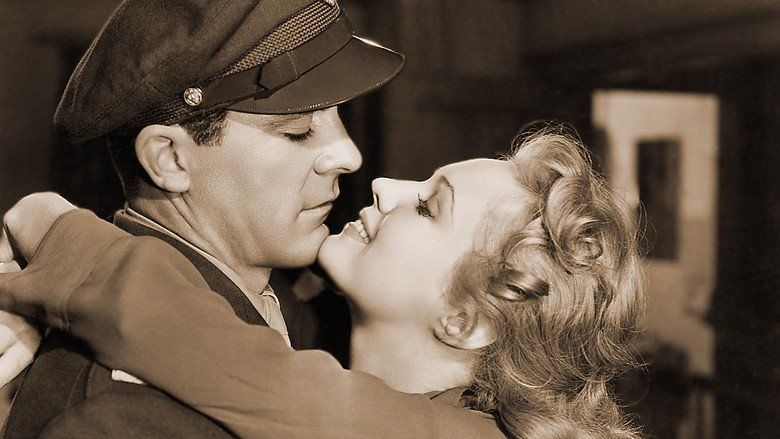
The best years of our lives 1946 final scene
Plot
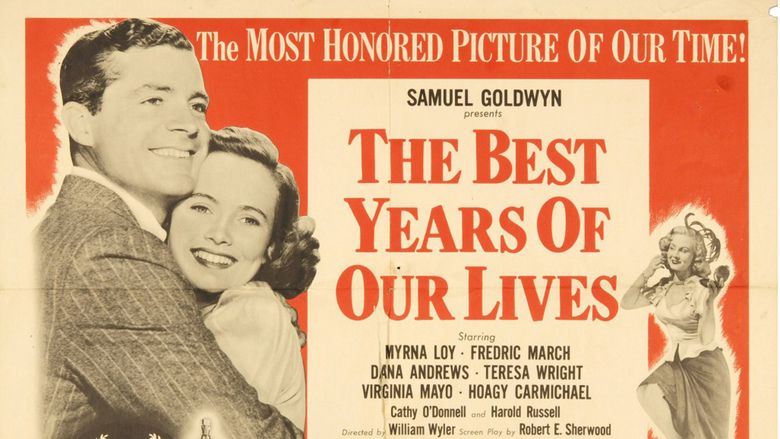
After World War II, Fred Derry (Dana Andrews), Homer Parrish (Harold Russell), and Al Stephenson (Fredric March) meet while flying home to Boone City (a fictional city patterned after Cincinnati, Ohio). Fred was a decorated Army Air Forces captain and bombardier in Europe. Homer lost both hands from burns suffered when his aircraft carrier was sunk, and now uses mechanical hook prostheses. Al served as an infantry platoon sergeant in the Pacific. All three have trouble adjusting to civilian life.
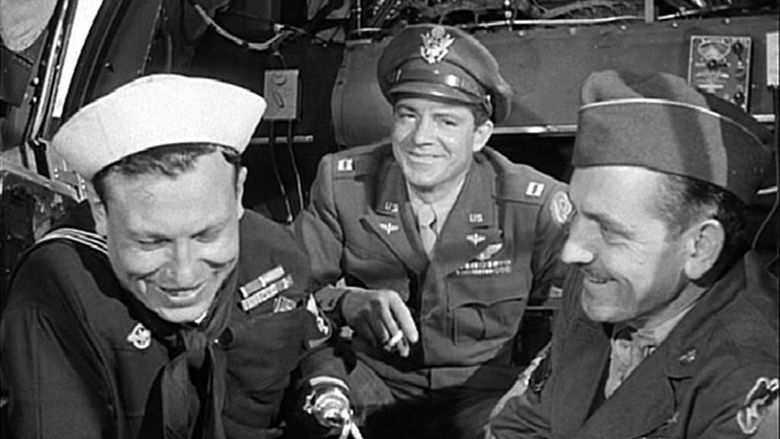
Al has a comfortable home and a loving family: wife Milly (Myrna Loy), adult daughter Peggy (Teresa Wright, who was only thirteen years Loy's junior), and college freshman son Rob (Michael Hall, who is absent after the first one-third of the film). He returns to his old job as a bank loan officer. The bank president views his military experience as valuable in dealing with other returning servicemen. When Al approves a loan (without collateral) to a young Navy veteran, however, the president advises him against making a habit of it. Later, at a banquet held in his honor, a slightly inebriated Al expounds his belief that the bank (and America) must stand with the vets who risked everything to defend the country and give them every chance to rebuild their lives.
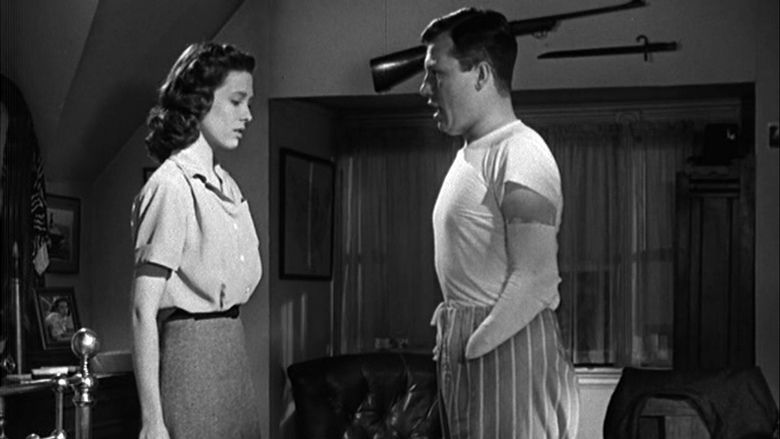
Before the war, Fred had been an unskilled drugstore soda jerk. He wants something better, but the tight postwar job market forces him to return to his old job. Fred had met Marie (Virginia Mayo) while in flight training and married her shortly afterward, before shipping out less than a month later. She became a nightclub waitress while Fred was overseas. Marie makes it clear she does not enjoy being married to a lowly soda jerk.
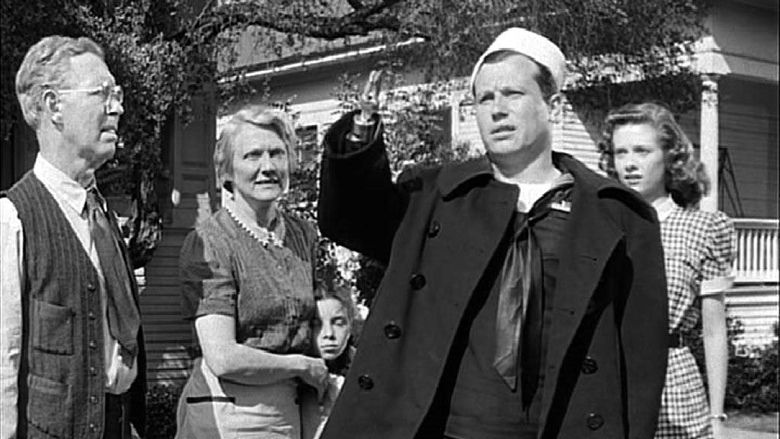
Homer was a football quarterback and became engaged to his next door neighbor, Wilma (Cathy O'Donnell), before joining the Navy. Both Homer and his parents now have trouble dealing with his disability. He does not want to burden Wilma with his handicap so he eventually pushes her away, although she still wants to marry him.
Peggy meets Fred while bringing her father home from a bar where the three men meet once again. They are attracted to each other. Peggy dislikes Marie, and informs her parents she intends to end Fred and Marie's marriage, but they tell her that their own marriage overcame similar problems. Concerned, Al demands that Fred stop seeing his daughter. Fred agrees, but the friendship between the two men is strained.
At the drugstore, an obnoxious customer, who claims that the war was fought against the wrong enemies, gets into a fight with Homer. Fred intervenes and knocks the man into a glass counter, costing him his job. Later, Fred encourages Homer to put his misgivings behind him and marry Wilma, offering to be his best man.
One evening, Wilma visits Homer and tells him that her parents want her to leave Boone City for an extended period to try to forget him. Homer bluntly demonstrates to her how hard life with him would be. When Wilma is undaunted, Homer reconsiders.
On arriving home, Fred discovers his wife with another veteran (Steve Cochran). After complaining to Fred that she has "given up the best years of my life," Marie tells him that she is getting a divorce. Fred decides to leave town, and gives his father his medals and citations. His father is unable to persuade Fred to stay. After Fred leaves, his father reads the citation for his Distinguished Flying Cross as composed by General Doolittle. At the airport, Fred books space on the first outbound aircraft, without regard for the destination. While waiting, he wanders into a vast aircraft boneyard. Inside the nose of a B-17, he relives the intense memories of combat. The boss of a work crew rouses him from his flashback. When the man says the aluminum from the aircraft is being salvaged to build housing, Fred persuades the boss to hire him.
At the bride's home, people have gathered for the wedding of Homer and Wilma. Fred, now divorced, is Homer's best man. While the vows are exchanged Fred and Peggy glance across at one another. At the conclusion everyone gathers around the newlyweds. Still gazing over at Peggy, Fred walks across the room, takes her in his arms and kisses her. He asks if she understands how things will be for them, that it will be a hard struggle at first, and that it could take years before they can get a life established. All the while Peggy smiles fondly at Fred, and then kisses him again.
Cast
Casting brought together established stars as well as character actors and relative unknowns. Famed drummer Gene Krupa was seen in archival footage, while Tennessee Ernie Ford, later a famous television star, appeared as an uncredited "hillbilly singer" (in the first of his only three film appearances). Blake Edwards, later notable as a film producer and director, appeared fleetingly as an uncredited "Corporal". Actress Judy Wyler was cast in her first role in her father's production. Sean Penn's father, Leo, played the uncredited part of the soldier working as the scheduling clerk at the beginning of the film.
Production
Director Wyler had flown combat missions over Europe in filming Memphis Belle (1944) and worked hard to get accurate depictions of the combat veterans he had encountered. Wyler changed the original casting that had featured a veteran suffering from posttraumatic stress disorder and sought out Harold Russell, a non-actor to take on the exacting role of Homer Parrish.
For The Best Years of Our Lives, he asked the principal actors to purchase their own clothes, in order to connect with daily life and produce an authentic feeling. Other Wyler touches included constructing life-size sets, which went against the standard larger sets that were more suited to camera positions. The impact for the audience was immediate, as each scene played out in a realistic, natural way.
The Best Years of Our Lives began filming on April 15, 1946 at a variety of locations, including the Los Angeles County Arboretum and Botanic Garden, Ontario International Airport, Ontario, California, Raleigh Studios, Hollywood, and the Samuel Goldwyn/Warner Hollywood Studios. The Best Years of Our Lives is notable for cinematographer Gregg Toland's use of deep focus photography, in which objects both close to and distant from the camera are in sharp focus. For the passage of Fred Derry's reliving a combat mission while sitting in the remains of a former bomber, Wyler used "zoom" effects to simulate Derry's subjective state.
The "Jackson High" football stadium seen early in aerial footage of the bomber flying over the fictional Boone City, is Corcoran Stadium located at Xavier University in Cincinnati. A few seconds later Walnut Hills High School with its distinctive dome and football field can be seen along with the downtown Cincinnati skyline (Carew Tower and PNC Tower) in the background.
After the war, the combat aircraft featured in the film were being destroyed and disassembled for reuse as scrap material. The scene of Derry's walking among aircraft ruins was filmed at the Ontario Army Air Field in Ontario, California. The former training facility had been converted into a scrap yard, housing nearly 2,000 former combat aircraft in various states of disassembly and reclamation.
Critical response
Upon its release, The Best Years of Our Lives received extremely positive reviews from critics. Shortly after its premiere at the Astor Theater, New York, Bosley Crowther, film critic for The New York Times, hailed the film as a masterpiece. He wrote,
It is seldom that there comes a motion picture which can be wholly and enthusiastically endorsed not only as superlative entertainment but as food for quiet and humanizing thought... In working out their solutions Mr. Sherwood and Mr. Wyler have achieved some of the most beautiful and inspiring demonstrations of human fortitude that we have had in films." He also said the ensemble casting gave the "'best' performance in this best film this year from Hollywood."
Several decades later, film critic David Thomson offered tempered praise: "I would concede that Best Years is decent and humane... acutely observed, despite being so meticulous a package. It would have taken uncommon genius and daring at that time to sneak a view of an untidy or unresolved America past Goldwyn or the public."
The Best Years of Our Lives has a 98% "Fresh" rating at Rotten Tomatoes, based on 37 reviews. Chicago Sun Times film critic Roger Ebert put the film on his "Great Movies" list in 2007, calling it "...modern, lean, and honest."
Popular response
The Best Years of Our Lives was a massive commercial success, earning an estimated $11.5 million at the North American box office during its initial theatrical run. When box office prices are adjusted for inflation, it remains one of the top 100 grossing films in U.S. history.
Among films released before 1950, only Gone With the Wind, The Bells of St. Mary's, The Big Parade and four Disney titles have done more total business, in part due to later re-releases. (Reliable box office figures for certain early films such as Birth of a Nation and Charlie Chaplin's comedies are unavailable.)
However, because of the distribution arrangement RKO had with Goldwyn, RKO recorded a loss of $660,000 on the film.
Awards and honors
1947 Academy Awards
The Best Years of Our Lives received nine Academy Awards. Fredric March won his second Best Actor award (also having won in 1932 for Dr. Jekyll and Mr. Hyde).
Despite his Oscar-nominated performance, Harold Russell was not a professional actor. As the Academy Board of Governors considered him a long shot to win, they gave him an honorary award "for bringing hope and courage to his fellow veterans through his appearance." When Russell in fact won Best Supporting Actor, there was an enthusiastic response. He is the only actor to have received two Academy Awards for the same performance. He later sold his Best Supporting Actor award at auction for $60,500, to pay his wife's medical bills.
Some posters say the film won nine Academy Awards due to the honorary award won by Harold Russell, and the Irving G. Thalberg Memorial Award won by Samuel Goldwyn, in addition to its seven awards for Best Picture, Best Director, Best Actor, Best Screenplay, Best Supporting Actor, Best Editing, and Best Music Score.
1947 Golden Globe Awards
1947 Brussels World Film Festival
1948 BAFTA Awards
Other wins
In 1989, the National Film Registry selected it for preservation in the United States Library of Congress as "culturally, historically, or aesthetically significant."
American Film Institute included the film as #37 in its 1998 AFI's 100 Years... 100 Movies, as #11 in its 2006 AFI's 100 Years... 100 Cheers, and as #37 in its 2007 AFI's 100 Years... 100 Movies (10th Anniversary Edition).
References
The Best Years of Our Lives WikipediaThe Best Years of Our Lives IMDbThe Best Years of Our Lives Rotten TomatoesThe Best Years of Our Lives Roger EbertThe Best Years of Our Lives Amazon.comThe Best Years of Our Lives themoviedb.org
